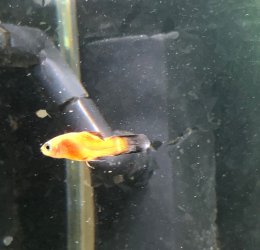How long does it take for the fish to become skinny and bent out of shape?
Do the sick fish produce a stringy white poop?
Are the sick fish eating properly?
What fish have died from this and over what time frame (eg: the last month, last 6 months)?
Have you added anything to the tank just before this started?
What is the ammonia, nitrite, nitrate, pH and GH levels in the water? I want numbers.
How long has the tank been running for?
How often do you do water changes and how much do you change?
Do you gravel clean the substrate when you do a water change?
Do you dechlorinate the new water before it's added to the tank?
How often do you clean the filter and how do you clean it?
--------------------------
The fish is skinny, emaciated, has clamped fins, and possibly gill flukes.
If the fish are fine and then go like this over the course of a week or 2, they probably have an internal protozoan infection.
Metronidazole is normally used for this, however I don't know how safe it is for shrimp. It should be ok.
--------------------------
Clamped fins can be from poor water quality or external protozoan infections. Most protozoan infections can be treated with salt and heat. I wouldn't use heat if they have an internal protozoan infection but salt should help with gill flukes and external protozoan infections.
You can add rock salt (often sold as aquarium salt), sea salt or swimming pool salt to the aquarium at the dose rate of 1 heaped tablespoon per 20 litres of water. If there is no improvement after 48 hours you can double that dose rate so there is 2 heaped tablespoons of salt per 20 litres.
If you only have livebearers (guppies, platies, swordtails, mollies), goldfish or rainbowfish in the tank you can double that dose rate, so you would add 2 heaped tablespoons per 20 litres and if there is no improvement after 48 hours, then increase it so there is a total of 4 heaped tablespoons of salt per 20 litres.
Keep the salt level like this for at least 2 weeks but no longer than 4 weeks otherwise kidney damage can occur. Kidney damage is more likely to occur in fish from soft water (tetras, Corydoras, angelfish, gouramis, loaches) that are exposed to high levels of salt for an extended period of time, and is not an issue with livebearers, rainbowfish or other salt tolerant species.
The salt will not affect the beneficial filter bacteria but the higher dose rate will affect some plants. The lower dose rate will not affect plants.
After you use salt and the fish have recovered, you do a 10% water change each day for a week. Then do a 20% water change each day for a week. Then you can do bigger water changes after that.
--------------------------
To work out the volume of water in the tank:
measure length x width x height in cm.
divide by 1000.
= volume in litres.
When you measure the height, measure from the top of the substrate to the top of the water level.
There is a calculator/ converter in the "How To Tips" at the top of this page that will let you convert litres to gallons if you need it.
Remove carbon from the filter before treating or it will adsorb the medication and stop it working.
Wipe the inside of the glass down with a clean fish sponge. Do a 75% water change and gravel clean the substrate. Make sure any new water is free of chlorine/ chloramine before it is added to the tank.
Clean the filter if it hasn't been done in the last 2 weeks. However, if the filter is less than 6 weeks old, do not clean it.
Increase surface turbulence/ aeration when using medications because they reduce the dissolved oxygen in the water.



